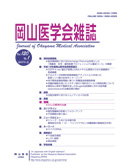

Journal of Okayama Medical Association
Published by Okayama Medical Association<Availability>
Full-text articles are available 3 years after publication.
Permalink : https://ousar.lib.okayama-u.ac.jp/40990
水銀中毒に関する研究 第2編 放射性同位元素Hg(203) Cl(2)による生体内分布に関する研究
小林 喬三
岡山大学医学部公衆衛生学教室
発行日
1959-07-10
抄録
By measuring the amount of radio-isotope mercury in the pricipal organs, blood, and urine of the guinea pigs administered with Hg(203) Cl(2), the author obtained the following results. 1. The author devised a method of the detecting and estimating of Hg(203) Cl(2) by oxidizing and degrading Hg203 Cl2 into the form of HgS by the Fresenius-Babo method. 2. Hg(203) Cl(2) shows a strong affinity specific to the kidneys; and also a large quanity of it has been excreted in the urine. 3. The amount of Hg(203) Cl(2) adsorbed in the blood and liver is extremely trifle. 4. A portion of Hg(203) Cl(2) introduced into the body of the pregnant guinea pig passes through the placenta and is tranferred and adsorbed in the embryo.
ISSN
0030-1558
NCID
AN00032489
